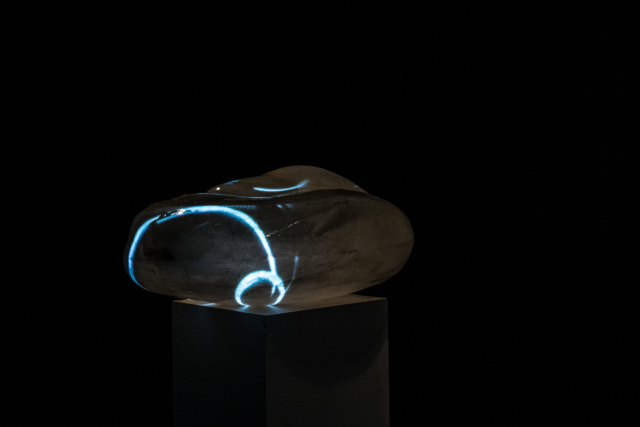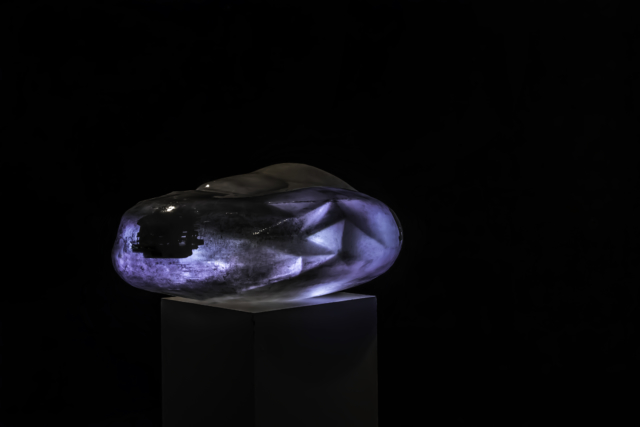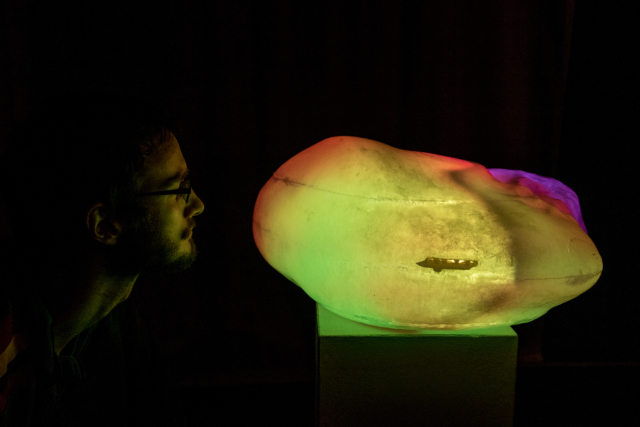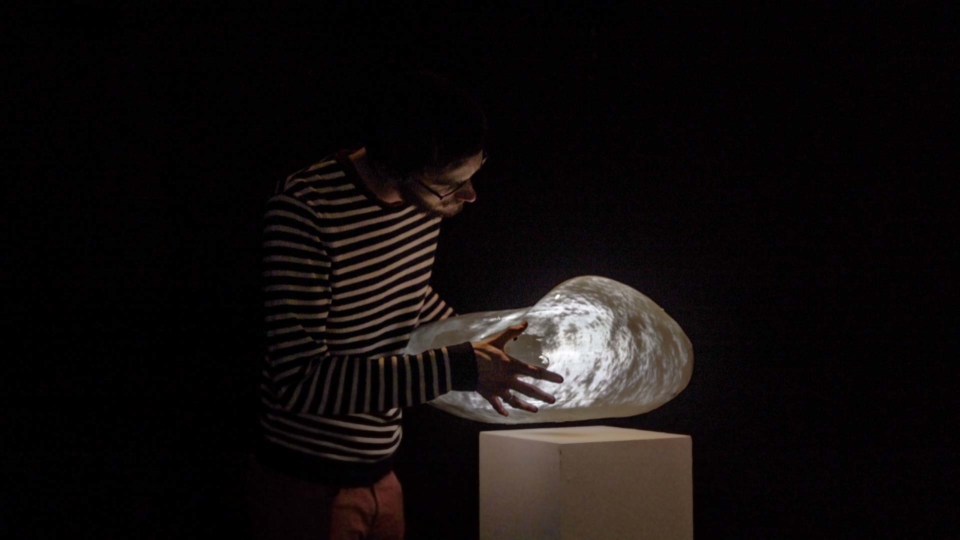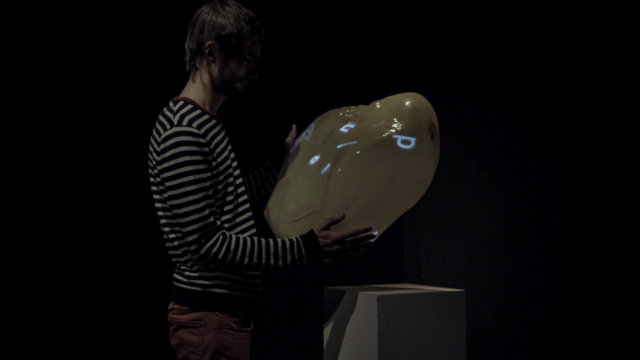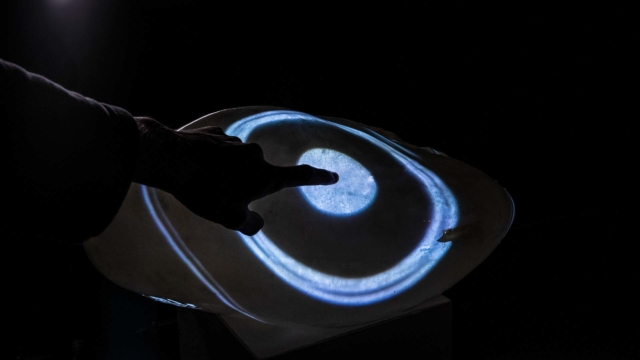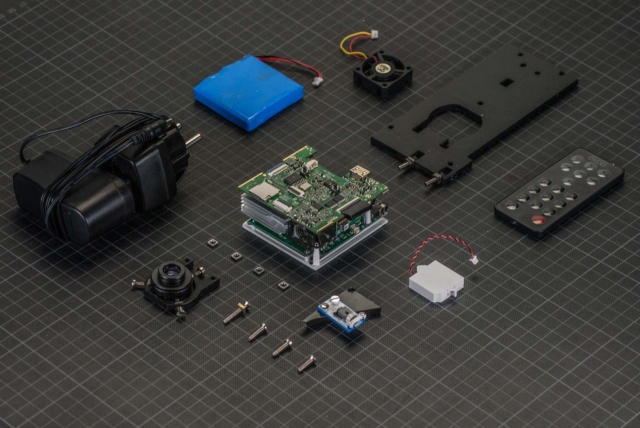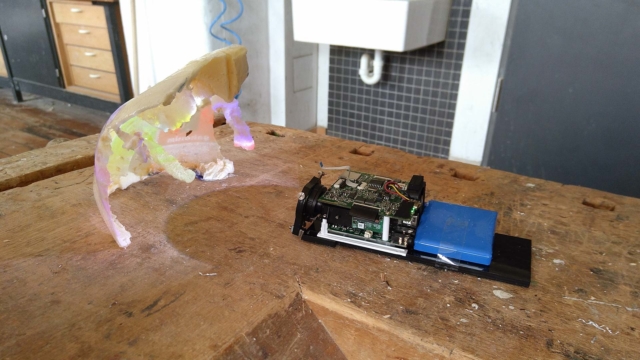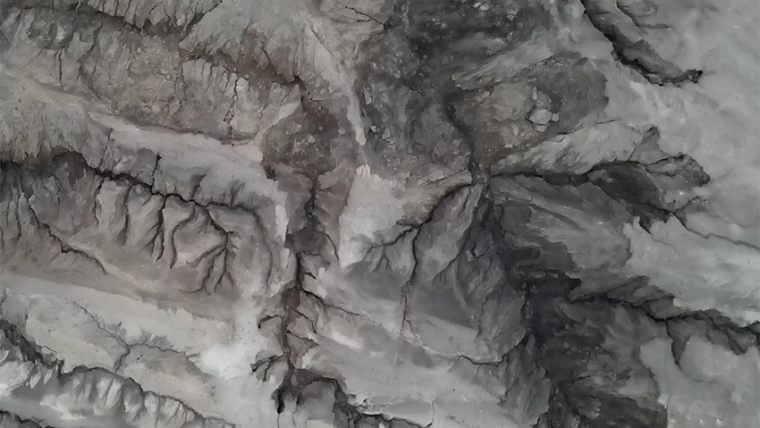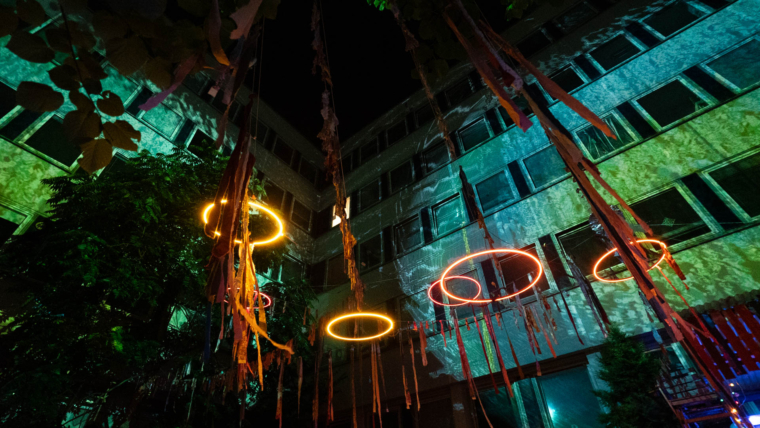SCREENIZATION: AUTONOMY
SCREENIZATION: AUTONOMY
Sculpture of purely screenic material
Presented in November 2018
Produced as part of series of "Screenization" Experiments
What if screens could be shaped into any form? What if every surface could gain screenic properties? What if the screen’s quality to change its appearance left the flat rectangle that it is currently bound to? What would happen to our expectations of forms and materiality, if every surface could gain the ability to change its appearance?
A screenic sculpture was built, that consists of a thin mold of semi-transparent plastic, cast from epoxy resin. The form of the object is deliberately designed as a “non-shape”, not representing any known form and also the materiality of the plastic is strangely unfamiliar. Following the tendency of screens for self-effacement, the materiality and surface condition of the object step back in favor of its content: The appearance of the sculpture is defined purely by its screenic materiality. As a mock-up of a screenitized object, the sculpture simulates the behavior of screenic properties outside a flat rectangle. Regardless the technologies used, the sculpture questions our understanding of shape, material and surface in a world where screens are increasingly dominating our visual perception.
Credits:
Part of Lorenz Potthast Master Thesis „Screenization – On the Diffusion of Digital Screens“
Master Digital Media – University of Arts Bremen
Process
In the inside three mini-projectors are mounted with a custom-built short-throw lens system. A specific projection setup creates a seamless coverage that fills the whole object from the inside. The projectors are battery driven and wireless connected, and therefore allow for the sculpture to be moved around in space freely without limitations or shadowing. The images shown on the surface can reach from abstract shapes to concrete depictions and are controlled by an external computer. A parallel existing digital version of the object is used to merge virtually simulated properties with the physical appearance of the object in real-time.
This experiment was part of project “Screenization – On the Diffusion of Digital Screens”, which combines a detailed examination of the historic development of screens and theoretical thoughts about the essence of screenic properties with two experimental infrastructures to make speculations about screens of the future tangible. You can find the theoretical background in the PDF and some more context here.

